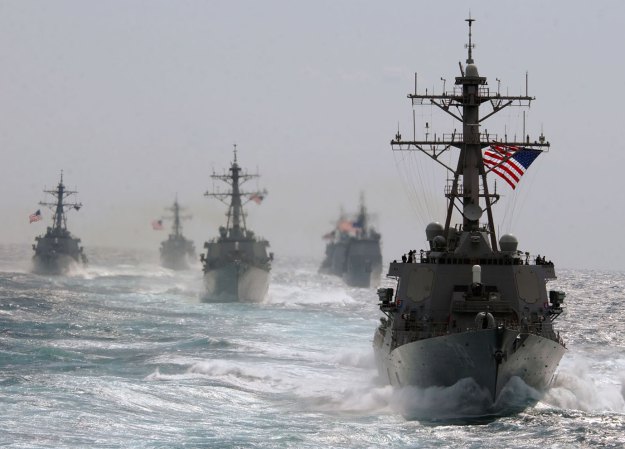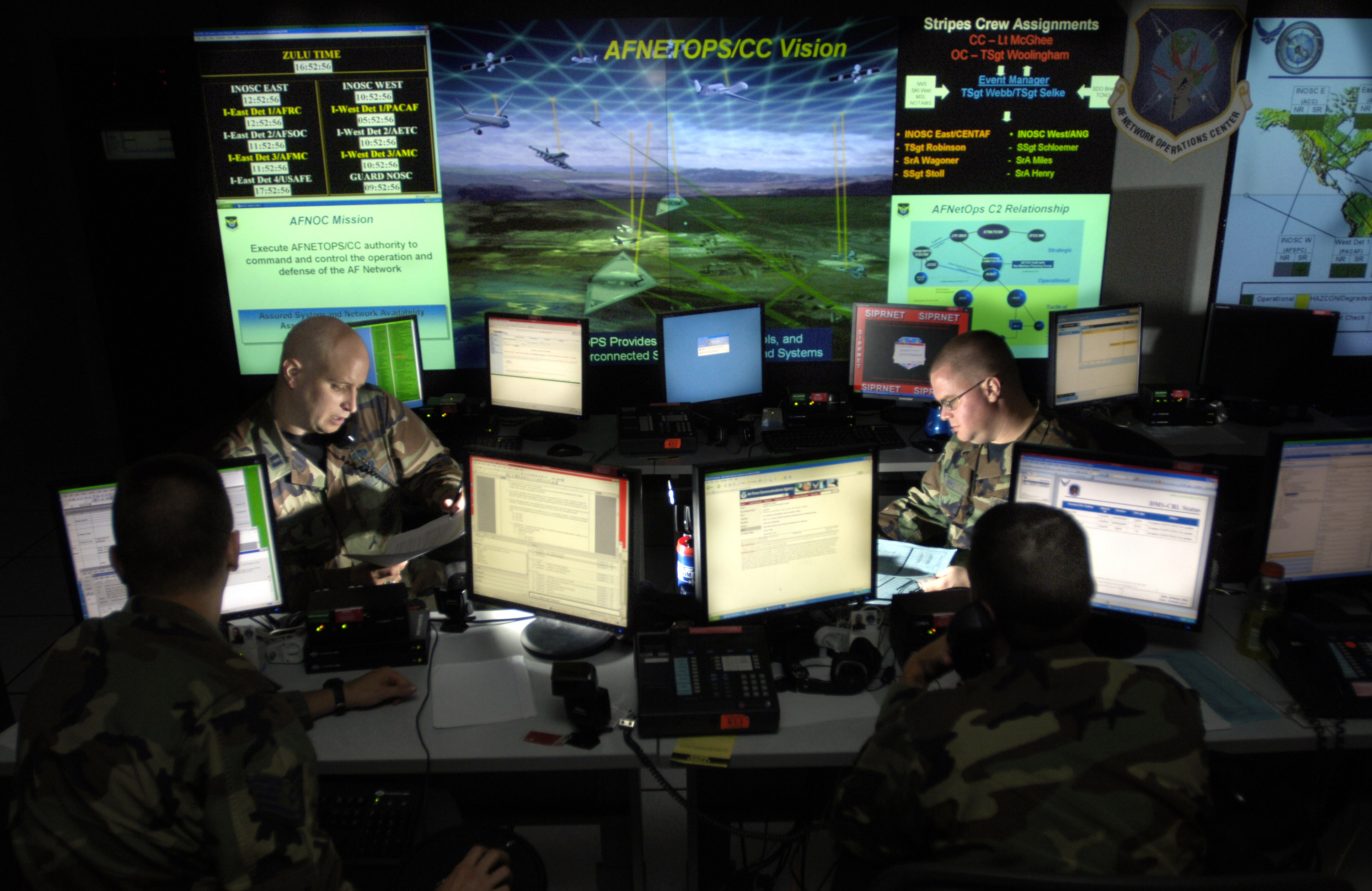U.S. Navy's stealth destroyer USS Zumwalt set to carry hypersonic missiles
By kevinhughes // 2025-01-28
Tweet
Share
Copy

- The USS Zumwalt, a stealth destroyer, is undergoing a major upgrade to carry the Intermediate-Range Conventional Prompt Strike (IRCPS) hypersonic missile system, capable of speeds exceeding Mach 5. This marks a significant advancement in the U.S. Navy's capabilities to counter emerging threats, particularly from China in the Indo-Pacific region.
- The ship's forward 155mm Advanced Gun System (AGS) turret has been replaced with four 87-inch launch tubes, each capable of holding three hypersonic missiles, allowing the Zumwalt to carry up to 12 missiles. These modifications, completed by October 2024, significantly enhance its long-range strike capabilities.
- Hypersonic weapons, traveling at speeds over Mach 5, offer greater maneuverability and precision compared to traditional ballistic missiles, making them difficult to intercept. The IRCPS system, developed jointly by the U.S. Navy and Army, is designed for swift, accurate strikes on strategic targets from over 1,000 miles away.
- The upgrade redefines the Zumwalt-class destroyers’ role, transforming them into the Navy's foremost offensive surface combatants. The USS Zumwalt is expected to achieve operational capability with the IRCPS system by 2026, with the other two Zumwalt-class ships following. The Navy is also exploring additional payload options for the launch tubes, such as uncrewed systems.
- The USS Zumwalt's transformation and live-fire tests in 2024 represent a milestone in naval warfare, emphasizing the importance of hypersonic technology in maintaining strategic advantage. The Zumwalt-class destroyers, once criticized for their unclear mission, are now central to the Navy's future fleet, showcasing adaptability and cutting-edge technology.
Hypersonic weapons: A game-changer in modern warfare
Hypersonic weapons, capable of traveling at speeds exceeding Mach 5 (approximately 3,830 mph), represent a paradigm shift in military technology. Unlike traditional ballistic missiles, which follow a predictable trajectory, hypersonic missiles are equipped with unpowered boost-glide vehicles that allow for greater maneuverability and precision. This makes them exceptionally difficult to intercept, even for advanced defense systems. The IRCPS missile, jointly developed by the U.S. Navy and Army, is designed to deliver swift, accurate strikes against high-value strategic targets, such as enemy command centers or missile launchers, from distances exceeding 1,000 miles. The Navy's investment in hypersonic technology is driven by the need to counter similar advancements by adversaries, particularly China. In 2023, leaked documents revealed that China had successfully tested its DF-27 intermediate-range hypersonic weapon system, underscoring the urgency for the U.S. to deploy its own capabilities. (Related: Leaked Pentagon documents indicate latest Chinese test of hypersonic missiles can evade all existing U.S. defenses.) "Hypersonic weapons are seen as the next stage in non-nuclear warfare," said Lawler. "They enable targets to be destroyed swiftly and accurately from far greater distances than conventional weapons allow." The integration of hypersonic missiles into the Zumwalt-class destroyers marks a turning point for a program that has faced significant challenges since its inception. Originally conceived in the early 2000s as a fleet of nearly 30 ships, the program was scaled back to just three vessels due to budget constraints and shifting priorities. The Zumwalt-class ships, once criticized for their lack of a clear mission, now have a renewed purpose as the Navy's foremost offensive surface combatants. The USS Zumwalt is expected to achieve operational capability with the IRCPS system by 2026, with the USS Lyndon B. Johnson and USS Michael Monsoor following suit in subsequent years. The Navy is also exploring the potential for the new launch tubes to accommodate other payloads, such as uncrewed underwater and aerial systems, further expanding the ships' versatility. "The Zumwalt class, with its advanced stealth design and integration of the Conventional Prompt Strike weapon system, will deliver sea-based precision capabilities essential for engaging strategic targets with long-range fire," Lawler stressed. The USS Zumwalt's transformation into a hypersonic missile platform represents a significant milestone in the evolution of naval warfare. As the U.S. Navy prepares to test its first at-sea hypersonic weapon system, the stakes could not be higher. In an era defined by great-power competition, the ability to deliver swift, precise strikes from vast distances will be critical to maintaining strategic advantage. Watch this video about the Russian Navy's Admiral Gorshkov frigate entering combat duty armed with Zircon hypersonic missiles. This video is from the High Hopes channel on Brighteon.com.More related stories:
US hypersonic test fails, ringing China, Russia alarm bells. Russia deploys warship with hypersonic missiles to waters around Ukraine. Mach 7 drone illustrates China’s latest leap in hypersonic technology. Sources include: TWZ.com InterestingEngineering.com LiveScience.com Brighteon.comTweet
Share
Copy
Tagged Under:
China national security military technology US Navy USS Zumwalt hypersonic missile military readiness military tech weapons technology Zumwalt-class destroyers IRCPS AGS turret precision-guided ammunition DF-27 hypersonic weapon system
You Might Also Like
Vance reaffirms U.S. interest in Greenland despite European opposition
By Cassie B. // Share
Trump’s tariff threat on Taiwan’s semiconductors sends shockwaves through global tech industry
By Lance D Johnson // Share
China prepares to resume trade talks with Trump amid tariff pressures
By Cassie B. // Share
Israel and Ukraine forming an alliance?
By Lance D Johnson // Share
Trump plans to protect the U.S. with an “Iron Dome” as space war heats up
By Lance D Johnson // Share
Recent News
Earth-like soil patterns on Mars reveal clues to the planet’s climate history
By willowt // Share
Virologist who endorsed HCQ for COVID-19 appointed to top pandemic post at HHS
By ramontomeydw // Share










